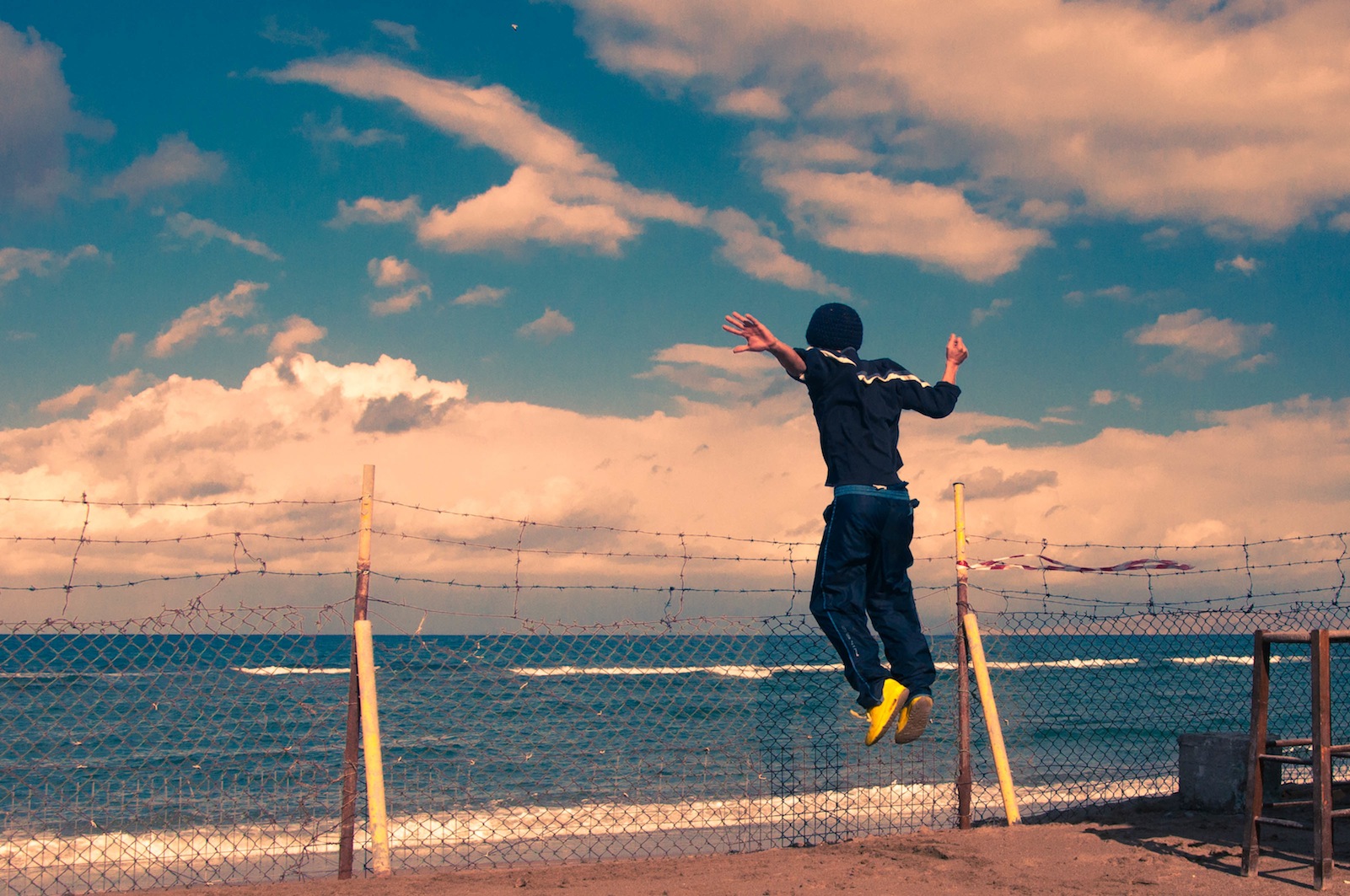One of the consequences of the current economic crisis, the lack of spending for show opportunities in the usual institutions on the field (galleries, art centres, museums), has driven artists and alternative initiatives to invest in other, and more open, forms of creative expression and work within the space of the community. exploring the variety of the public space, through the collaboration and companionship among themselves and the spectators. We could readily say that ResidenceSEA in Heraklion, with thirteen international artists and events of this kind in its calendar so far, has been over these past years a token of this new tendency.
The latest residency at this period comprises two alternative artists, Rifa from Vienna and the Londoner Curtiss Cobane. If someone should give a tag for their work, he must absolutely call them as artists of ‘action’ and ‘interaction’ with their surroundings. Their artistic idiom, consisting in the production of particular videos and of a singular rap/indi/ electronic music, that bears no resemblance to the usual vocabulary of the sector, which should not merely be seen as a musical performance, but also as the extension of a gestural interaction with their environment and of a personal and active involvement with the surrounding urban landscape.
Rifa and Cobane, perambulating the borders of the city they manage to locate and reinvent the identity of places and objects that collect and which the routine and the rush of everyday’s life has jettisoned: dilapidated and neglected houses, abandoned things, carcasses of stray animals. Entities that our current way of life, within the modern city walls, push aside if not marginate altogether. In the context of their endeavour within the public tissue, they explore the extent of this mutation and remark the possibilities of the ‘reconquest’ of this public space, by means of the vociferous expression of an alternative message inside the perimeter of the city.
A message, that escapes from the conventional means of expression and the medias: like the intruding voice of the rap music in the streets, or the ‘vandalism’ of graffitis upon the walls of a city, and the collective expression in improvised performances at public places. A gesture that invigorates the significance that many social groups (mostly young people, or marginated sectors) claim to achieve, by emerging ad hoc, and in situ, as opposed to the official centres of art and communication production.
Rifa’s attempt to draw attention to the existing social and ecological problems of the modern urban space, remind us the socially and environmentally engaged art of Joseph Beuys. Also, the hand made mask that Rifa wears and the carcasses of the dead animals he uses, could be considered as a reminiscence of Beuys’ performances with his ‘silver mask’ and the dead hare in the ‘60’s for the sensitization of the public on the social, ecological problems of his times and the belligerence of the Cold War.
Both artists seem to introduce with a new vigour the perennial question ‘why the city has become strange to all of us’ (to echo Heinrich Böll). Today, the large arteries that intersect the city planning, the high buildings, with the walls that raise toward the city horizon and the skyline and the human conception of transportation and speed of movement, alienate the population from the real character of the territorial and community substance of their city.
The ‘Schock Erlebnis’ that Walter Benjamin talked about is no longer provoked by the colours, the lights and the power of message of the ‘reclames’ in every corner of the city. Not even the gigantic buildings, that encompass Kant’s both ‘mathematical’ and ‘dynamic’ Sublime, provoke in our days the same amount of awe and surprise. In our days, the size and the complexity are seen as necessary prerequisites of a big city and there is no need for the eye to linger much on them. Nowadays, the ‘shock’ is derived from the decay, the destruction, the vacuum and the loss. Rifa and Cobane propose that the ‘blow’, the ‘trauma’ in the visual field of the viewer / by-walker which causes his curiosity, is now the ruin, the large voids in the urbanistic planning, the large openings in the skyline and the cityscape. And also, that the act of vandalism (either in the form of ‘graffiti’, or as an uncommon intervention upon an urban territory or surface), is in our days the ‘unexpected’ against the normality and uniformity of the architectural harmony and causes the surprise, or provokes concern, by virtue of the uniqueness of this unfamiliar, yet radical, gesture.
George Byron – Davos – PhD Aesthetics and Philosophy of Language
Photo on top by Antje Larsen
